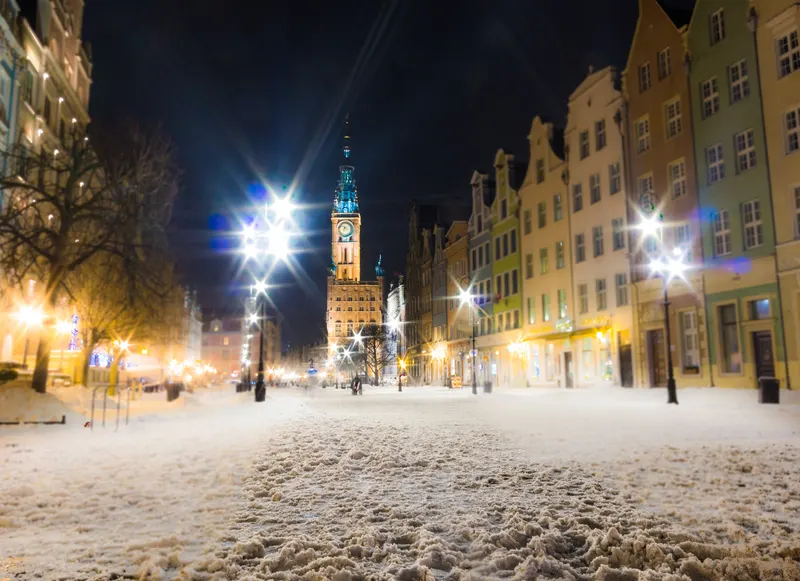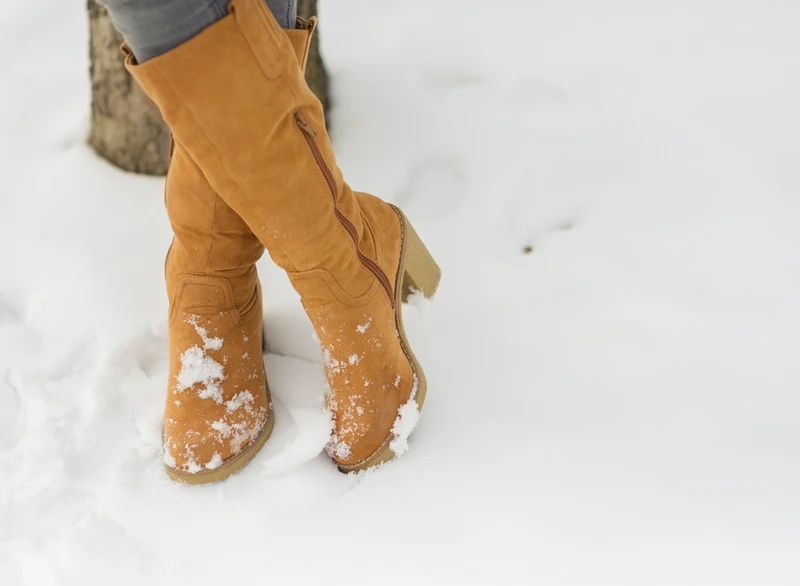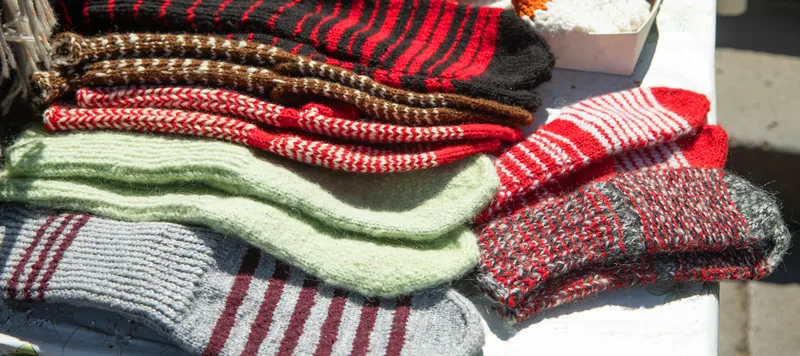Winter travel in Europe offers a magical experience, with festive Christmas markets, snow-covered landscapes, and cozy atmospheres. Preparing the right wardrobe with the best Europe winter travel clothes is crucial for enjoying the cold weather comfortably. Layering is key when packing clothes for European winters, allowing you to adjust to varying temperatures throughout your trip.
We recommend starting with a base layer of thermal underwear, adding warm sweaters or fleeces, and topping it off with a waterproof and insulated coat. Don’t forget accessories like gloves, scarves, and warm hats to protect against chilly winds. Comfortable, waterproof boots are essential for navigating potentially snowy or wet streets while exploring charming European cities.

Remember that winter temperatures can vary significantly across Europe, from mild conditions in southern regions to frigid temperatures in the north. Research your specific destinations to tailor your packing list accordingly. With the right clothing choices, you’ll be well-prepared to embrace the enchanting winter atmosphere and create unforgettable memories during your European adventure.
Key Takeaways
- Layer clothing for versatility in changing winter temperatures across Europe
- Pack waterproof and insulated outerwear to stay warm and dry during outdoor activities
- Research destination-specific weather conditions to customize your winter travel wardrobe
European Winter Climate Overview
Europe’s winter weather varies greatly across the continent. From mild Mediterranean conditions to frigid Nordic temperatures, travelers should prepare for diverse climates.
Understanding Europe’s Winter Weather
Winter in Europe typically spans from December to February. Southern regions like Spain and Italy often enjoy milder temperatures between 40-60°F (4-15°C). These areas tend to be drier with occasional sunny days.
Central European countries experience colder conditions. Average temperatures hover around freezing, with frequent rain and snow. Cities like Paris and Berlin may see lows of 25°F (-4°C).
Northern Europe faces the harshest winters. Scandinavia and Baltic states can plummet to -4°F (-20°C) or lower. Snowfall is common, and daylight hours are significantly reduced.

Coastal areas generally have milder winters due to maritime influence. Inland regions, especially at higher elevations, face colder and snowier conditions.
We recommend checking local forecasts before travel. Weather can be unpredictable, and with so many unique things to do in Europe in the winter, a sudden cold snaps or warm spell could alter your itinerary across the continent.
Essentials for Winter Travel in Europe
Proper preparation is key for a comfortable winter trip to Europe. We’ll cover crucial elements like travel insurance, layering techniques, and efficient packing strategies to ensure you’re ready for cold weather adventures.
Travel Insurance for Winter Trips
Travel insurance is vital for winter trips to Europe. It protects against trip cancellations due to severe weather, which is more common in winter. Many policies cover missed connections and delayed flights caused by snow or ice.
Look for plans that include winter sports coverage if you’ll be skiing or snowboarding. This typically covers equipment rental, piste closure, and medical treatment for injuries.
We recommend checking if your policy includes emergency medical evacuation, as winter conditions can make transport challenging in remote areas.
Importance of Layering
Layering is essential for staying warm and comfortable in European winter weather. Start with a moisture-wicking base layer to keep skin dry. Merino wool or synthetic materials work well.
Add an insulating mid-layer like a fleece or wool sweater. For the outer layer, choose a waterproof and windproof jacket. This system allows you to adjust your clothing based on activity level and temperature changes throughout the day.
Don’t forget accessories. A warm hat, gloves, and scarf are must-haves. Thermal socks and waterproof boots complete your winter armor.
Backpack and Packing Cubes
A good travel backpack is crucial for winter trips. Look for one with a 30-40 liter capacity for most trips. Water-resistant materials help protect your gear from snow and slush.
Packing cubes are game-changers for organization. Use them to separate clothing types and compress bulky winter wear. This saves space and makes it easier to find what you need quickly.

We suggest using compression sacks for puffy jackets and sweaters to maximize space. Remember to leave room for souvenirs or extra layers you might buy during your trip.
Creating Your Winter Packing List
A well-planned winter packing list for Europe is essential for staying warm and comfortable during your travels. We’ll cover the key clothing layers you’ll need, from base to outer.
Thermal Base Layers
Merino wool or synthetic thermal underwear forms the foundation of your winter wardrobe. We recommend packing:
- 2-3 long-sleeve tops
- 2 pairs of long johns or leggings
- 4-5 pairs of wool socks
These items wick moisture away from your skin, keeping you dry and warm. Merino wool is odor-resistant, allowing for multiple wears between washes.
Insulating Mid-Layers
Mid-layers trap warm air close to your body. Pack versatile pieces that can be mixed and matched:
- 2 lightweight sweaters or fleece pullovers
- 1 heavier wool or cashmere sweater
- 1 insulated vest or light jacket
- 2 long-sleeve shirts (for layering or wearing alone indoors)
Choose neutral colors to create a capsule wardrobe, maximizing outfit combinations while minimizing packed items.

Waterproof Outerwear
Your outer layer protects against wind, rain, and snow. Essential items include:
- 1 waterproof and breathable winter coat (preferably knee-length)
- 1 pair of waterproof pants or snow pants (if planning outdoor activities)
- 1 pair of waterproof boots with good traction
- Waterproof gloves or mittens
- Warm hat or beanie
- Scarf or neck gaiter
Look for packable options to save space in your luggage. A good-quality winter coat is worth the investment for European winter travel.
Selecting Appropriate Footwear
Choosing the right footwear is crucial for winter travel in Europe. We’ll explore winter boots versus hiking boots and the advantages of waterproof shoes to keep your feet warm and dry.
Winter Boots vs. Hiking Boots
Winter boots offer superior insulation and warmth for cold European winters. They typically have thick, insulated linings and sturdy rubber soles for traction on icy surfaces. Many winter boots are designed to be waterproof, protecting feet from slush and snow.

Hiking boots, while durable, may not provide enough warmth for extended outdoor activities in freezing temperatures. They excel in ankle support and are suitable for light snow or cold but dry conditions. For versatility, some travelers opt for insulated hiking boots as a compromise.
We recommend winter boots for city exploration and hiking boots for rural adventures or milder winter destinations. Consider packability – winter boots tend to be bulkier.
Benefits of Waterproof Shoes
Waterproof shoes are essential for European winter travel. They keep feet dry in wet conditions, preventing discomfort and potential health issues like blisters or fungal infections.
Quality waterproof boots have sealed seams and water-resistant materials. Look for rubber soles with deep treads for better grip on slippery surfaces. Some waterproof boots also offer breathability, allowing moisture to escape while keeping water out.
We’ve found that waterproof shoes extend outdoor exploration time in rainy or snowy weather. They’re particularly valuable in cities with cobblestone streets, where puddles are common. Invest in waterproof spray to maintain your shoes’ water resistance throughout your trip.
Fashionable Winter Clothing
Winter fashion in Europe combines style and practicality. Elegant outfits keep travelers warm while looking chic in cold destinations.
Accessorizing with Scarves and Gloves for Europe Winter Travel Clothes
Scarves and gloves are essential winter accessories that add flair to any outfit. We recommend packing a versatile wool scarf in a neutral color like charcoal or camel. It can be styled multiple ways – draped, wrapped, or knotted.

For gloves, leather pairs lined with cashmere offer warmth and sophistication. Touchscreen-compatible gloves are practical for using phones without exposing hands to the cold.
Statement scarves in bold patterns or bright hues can liven up basic winter coats. Oversized blanket scarves double as cozy wraps on chilly evenings.
Merino Wool and Cashmere Apparel
Merino wool and cashmere are ideal fabrics for winter travel. They’re warm, lightweight, and resist odors. We suggest packing several merino wool base layers to wear under outfits.
A cashmere sweater is a luxurious yet practical choice for Europe winter travel clothes. It’s incredibly soft, warm, and takes up minimal luggage space. Neutral colors like black, navy, or oatmeal pair easily with other items.

Merino wool socks keep feet toasty without bulk. They wick moisture and regulate temperature better than cotton.
Winter Fashion Tips
Layer strategically for warmth without bulk. Start with a thin base layer, add an insulating mid-layer like a sweater, then top with a waterproof coat.
Invest in a high-quality winter coat. A knee-length down parka or wool peacoat offers versatile style and warmth.

Dark colors hide travel dirt better, but consider one statement piece in a bright hue to liven up outfits.
Ankle boots with good traction work for day-to-night wear. Pack thermal insoles for extra warmth.
Choose wrinkle-resistant fabrics to maintain a polished look while traveling. Merino wool and cashmere naturally resist wrinkles.
Functional Travel Wardrobe
A functional travel wardrobe for winter in Europe combines versatility and warmth. We’ll explore key pieces that maximize comfort and style while minimizing luggage space.
Fleece-Lined Leggings and Chinos
Fleece-lined leggings are a game-changer for winter travel. They provide extra warmth without bulk, perfect for layering under dresses or wearing on their own. We recommend packing 2-3 pairs in neutral colors like black and navy.
Chinos offer a smart-casual option for men and women. Look for styles with a touch of stretch and a fleece lining for added coziness. A dark color like charcoal or olive green works well for various outfits.
Both options are easy to dress up or down, saving valuable suitcase space. They’re also quick-drying, making them ideal for hand-washing during your trip.
Layering with Thermal Tops
Thermal tops form the foundation for Europe winter travel clothes. We suggest packing 3-4 lightweight, moisture-wicking base layers. Merino wool is an excellent choice for its warmth and odor-resistant properties.
Choose a mix of long-sleeve and short-sleeve options. This allows for versatile layering depending on the day’s activities and temperature fluctuations.

Look for tops with a close fit to trap heat effectively. Neutral colors like white, black, and gray offer maximum outfit flexibility. Some thermal tops now come with stylish details, allowing them to double as standalone pieces for casual outings.
Remember to consider neckline variations. A turtleneck thermal can eliminate the need for a scarf on milder days.
Packing Toiletries and Other Necessities
When preparing for winter travel in Europe, packing the right toiletries and essentials is crucial. We’ll cover key items to include and smart packing strategies.
Laundry Bag for Organizing Clothes
A laundry bag is essential for keeping dirty clothes separate from clean ones. We recommend choosing a waterproof or water-resistant bag to prevent moisture from seeping through.
Look for a bag with compartments to organize different types of clothing. This makes it easier to sort items for washing later.
Consider a compressible laundry bag to save space in your luggage. Some bags come with built-in hooks, allowing you to hang them in hotel bathrooms or closets.
Moisture-Wicking Underwear Choices
Packing the right underwear is crucial for comfort for Europe winter travel clothes. Moisture-wicking underwear helps keep you dry and warm by pulling sweat away from your skin.
We recommend merino wool or synthetic blends designed for cold weather. These materials dry quickly and provide excellent insulation.
Pack enough pairs for your trip duration, plus a few extras. Consider bringing a mix of styles, including long underwear or thermal leggings for extra warmth on particularly cold days.
Look for underwear with flat seams to prevent chafing, especially if you plan on walking long distances while sightseeing.
Tips for a Comfortable Journey
Packing smart and planning ahead can make your winter trip to Europe much more enjoyable. We’ll explore key clothing items and accessories to keep you cozy and prepared for cold weather adventures.
Choosing Long Underwear and Socks
Long underwear is essential for staying warm in chilly European winters. We recommend merino wool or synthetic thermal base layers for their moisture-wicking properties. These materials keep you dry and comfortable even during active sightseeing days.

For socks, choose wool blends that offer warmth without bulk. Pack at least 3-4 pairs to rotate throughout your trip. Consider compression socks for long flights or train rides to improve circulation.
Don’t forget to pack an extra set of thermals and socks in your carry-on bag. This precaution ensures you have warm layers if your checked luggage is delayed.
Exploration with Infinity Scarves
Infinity scarves are versatile accessories perfect for European winter travel. They provide warmth around your neck and can be pulled up to cover your face in windy conditions.
Choose a soft, non-itchy material like cashmere or a wool blend. Neutral colors like black, gray, or navy pair well with multiple outfits.

Some infinity scarves feature hidden zippered pockets. These are great for storing small items like lip balm or a transit pass. We love the hands-free convenience when exploring bustling Christmas markets or navigating crowded streets.
Travel Essentials for Convenience
Hand and foot warmers are small but mighty additions to your packing list. Slip them into gloves or shoes for extra warmth during outdoor activities.
A collapsible water bottle saves space and helps you stay hydrated. Look for insulated options to keep hot drinks warm on chilly days.
Portable chargers are crucial for keeping your devices powered. Cold weather can drain batteries faster, so pack a high-capacity power bank.
Consider a small daypack with a waterproof cover. This allows you to carry layers, snacks, and a camera while protecting your belongings from unexpected snow or rain.
Celebrating Christmas Markets
Christmas markets offer a magical winter experience in Europe. The festive atmosphere, twinkling lights, and traditional goods create unforgettable memories for visitors.
Christmas Markets in Europe’s Experience
We’ve explored numerous European Christmas markets and can attest to their charm. These markets typically open in late November and run through December 24th. Wooden stalls line city squares, offering handmade crafts, ornaments, and local delicacies.

The aroma of mulled wine and roasted chestnuts fills the air. Visitors can sip hot drinks while browsing unique gifts. Many markets feature ice skating rinks and carousels for added fun.
Popular markets include Germany’s Nuremberg Christkindlesmarkt and Austria’s Vienna Christmas World. Each has its own traditions and specialties.
Dress warmly for outdoor markets. We recommend layering with a thick coat, hat, gloves, and comfortable boots. This ensures you can enjoy the festivities for hours.
To make the most of your visit, arrive in the late afternoon. The markets are especially enchanting after dark when the lights twinkle against the night sky.
Final Check: Reviewing the Winter Packing List
Before zipping up our suitcases for Europe, we need to review our winter packing list carefully. Let’s ensure we haven’t forgotten any essentials.
First, we’ll double-check our warm layers. Have we packed enough thermal underwear, sweaters, and a reliable winter coat?
Next, we’ll confirm our footwear choices. Waterproof boots are a must for snowy conditions. We should also include warm socks to keep our feet cozy.
Accessories are crucial for winter comfort. Our list should include a scarf, hat, and gloves or mittens. These items will protect us from chilly winds.
We’ll verify that we’ve included versatile pieces that can be mixed and matched. This strategy helps us create multiple outfits without overpacking.
Let’s not forget practical items like a travel umbrella and hand warmers. These can be lifesavers on cold, wet days.
Finally, we’ll check that our toiletries include lip balm and moisturizer to combat dry winter air.
By reviewing our packing list thoroughly, we can ensure we’re well-prepared for our winter adventure in Europe.
Frequently Asked Questions
Packing for winter travel in Europe requires careful consideration of essential items and layering strategies. Proper clothing choices help travelers stay warm and comfortable while exploring various European destinations during the colder months.
What are the essential items for a woman’s winter packing list for Europe?
Women traveling to Europe in winter should pack thermal underwear, warm sweaters, and a waterproof coat. Include versatile pieces like dark jeans, warm leggings, and a mix of long-sleeve tops. Don’t forget accessories like a warm scarf, gloves, and a hat to protect against the cold.
How should men dress for European winters to stay warm and stylish?
Men can opt for a combination of warm sweaters, long-sleeve shirts, and thermal base layers. Pack dark jeans or warm trousers, along with a waterproof jacket or coat. Add a stylish scarf, warm hat, and gloves to complete the winter look while staying comfortable.
What are the best outerwear options for traveling through Europe in winter?
A waterproof and insulated coat is ideal for European winters. Consider a down jacket for dry, cold climates or a waterproof parka for wetter regions. A wool coat can be a stylish option for city explorations, while a technical jacket works well for outdoor activities.
What type of shoes are recommended for comfortable and practical winter travel in Europe?
Waterproof, insulated boots are essential for winter travel in Europe. Look for shoes with good traction to handle icy sidewalks. Pack comfortable walking shoes or sneakers for milder days. Consider bringing a pair of dressier shoes for evenings out in cities.
How can travelers effectively layer their clothing for winter trips in Europe?
Start with a moisture-wicking base layer like thermal underwear. Add a warm middle layer such as a sweater or fleece. Top it off with a waterproof and windproof outer layer. This layering system allows for easy adjustment to varying temperatures and activities throughout the day.
What are the key considerations when packing for a 10-day winter trip in Europe?
Pack versatile pieces that can be mixed and matched to create different outfits. Aim for 3-4 tops, 2-3 bottoms, and one warm coat. Include enough undergarments and socks for the trip duration. Don’t forget toiletries, electronics, and any necessary travel documents.
